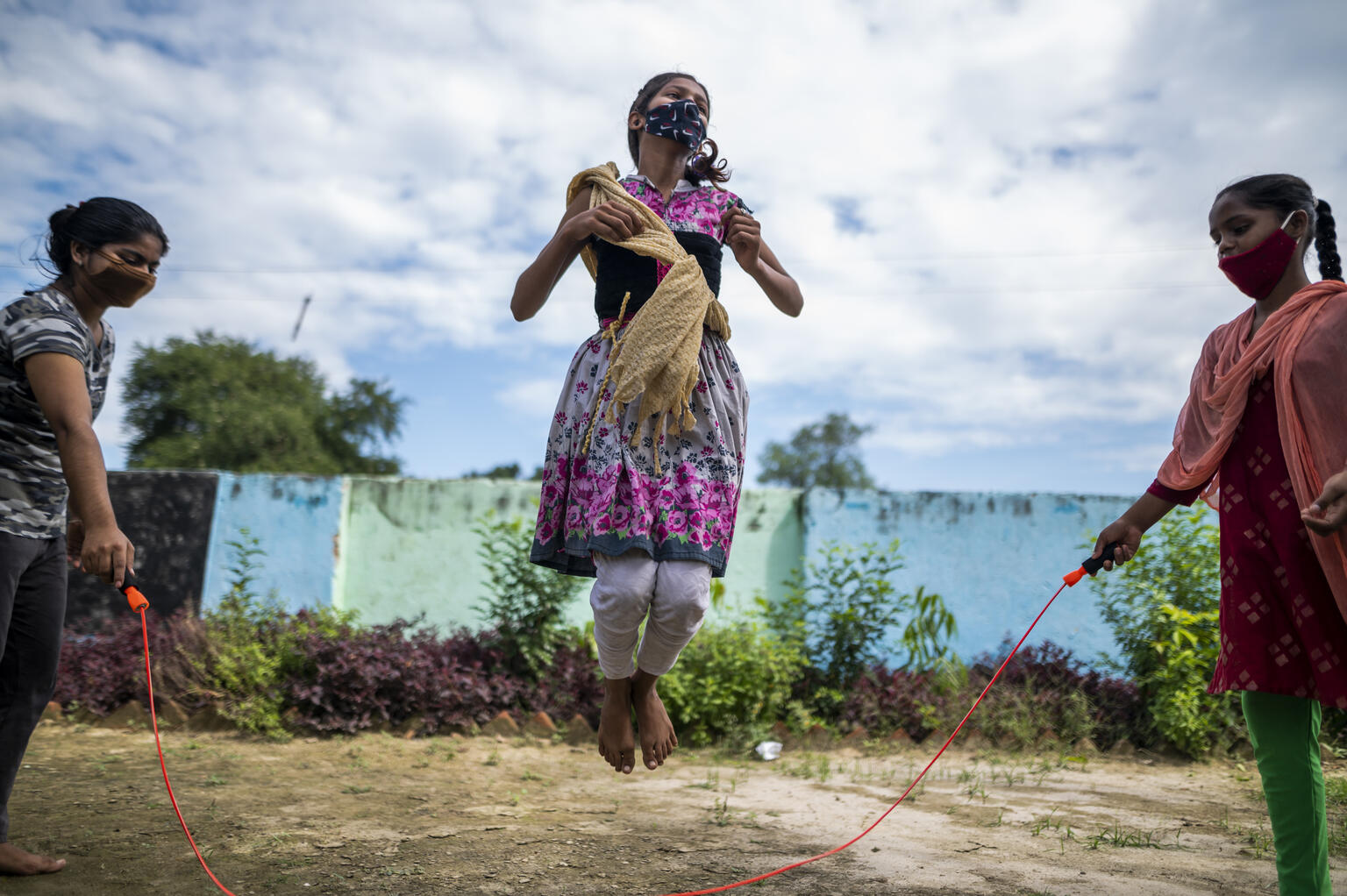
Today, Rumi Kumari is a student in Burmu, a town in eastern India. But just a few years ago, at the mere age of 10 and forced by economic circumstances, she left her home to be a domestic worker. And in the midst of the unravelling COVID-19 pandemic and its devastating consequences, Rumi was at the threshold of child marriage.
Her journey back to school wasn’t easy. The sixth of eight siblings born to a bonded labourer, Rumi’s family was in acute poverty. This led to her parents proposing early marriage when she was 14 as a source of income and support. She was saved in the nick of time, through encounters with awareness drives run by children’s organisations, after which she was adamant to fight for not just her education and future, but of all those around her. She stopped the early marriages of both herself and of her younger brother, which was being arranged for a large sum of dowry, convinced her parents to let them both go back to school and became a youth activist for children’s rights in her town.
Rumi’s story is a window to the state of the girl child in India and the intersecting challenges, escalating risks and declining rights girls faced during the pandemic.
Save the Children, known in India as Bal Raksha Bahrat, has conducted a deep-dive study into the impact of the ravaging COVID-19 pandemic on girls, with a focus on populations in urban slums. The ‘World of India's Girls: Spotlight on Adolescent Girls amid COVID-19’ looks into the implications of the pandemic on girls' access to education, health, nutrition, play and recreation, and risk of child marriage.
How COVID-19 changed the lives of girls
India is a land of over a billion people and has the largest population under the age of 18. The COVID-19 pandemic – the lockdowns, school closures, high rates of inflation and unemployment and rising poverty – had a deep and multi-faceted impact on the lives and safety of children in the country.
And, as this research reveals, the impact on girls was significantly disproportionate.
Save the Children’s study revealed that health and nutrition took a major hit, with four out of five households facing food insecurity and 80 percent of families reporting that the specific needs of young girls went unmet.
School closures meant that education is left behind – with only 33 percent of girls assessing online learning. Access to safe and inclusive spaces for girls drastically reduced as well. Girls were unable to go to playgrounds or safe public spaces, and those available were dominated by boys who largely witnessed more freedom of movement during the pandemic. This was concerningly juxtaposed with a rise in domestic violence, making both homes and the outside world less safe for girls.
Another concerning finding was that the progress made in recent years to eliminate child marriages could get reversed. Child marriage is both a form and enabler of violence, particularly gender-based violence. It puts children at grave risk of domestic and sexual violence, harms their physical and mental health, deprives them of liberty, and often education.
Job losses and reduced household incomes were major drivers of early marriages, exacerbated by loss of access to education. India’s case echoes the global estimate that the COVID-19 pandemic and its impacts are threatening to put millions of additional girls at risk around the world.
Lessons from a trying time
The report makes a number of recommendations from lessons learned through the experiences of girls during the pandemic.
It calls on authorities to create safe spaces for girls where they can interact and socialise, including, importantly, ensuring education and a safe return to school.
Moreover, political commitment and national or even local action can go only so far if not met with adequate financial investment. Considering that COVID-19 pandemic and its after-effects will continue to impact the lives of girls, the report highlights the pressing need to increase gender-sensitive investments for the girl child. As presented in the evidence-based Together to #ENDviolence policy proposal to make more investments, better spent, governments and donors – public and private – must commit to costing and adequately funding the implementation of national action plans to end violence against children.
The report also calls for building evidence, including by listening to girls and building their agency. The End Violence Partnership has consistently and proudly elevated the voices of inspiring girls from around the world who are speaking up on the challenges they face and their efforts to overcome them for all children.
At the Together to #ENDviolence Spotlight Session at the Global Forum for Children and Youth (CY21), alongside other child activists from different regions of the world, Sonia from India shared her inspiring journey of working with and for children to end child marriage in her village. Her story exemplified the power of children’s networks and the importance of their voices in bringing out change in their communities.
Watch the Youth Panel here and meet the powerful Together to #ENDviolence advocates and champions fighting to end violence against children, including young girls from around the world.
The experiences of girls in India shed light into the lives and perspectives of children and their families in a developing country, with its own context and challenges. More studies, such as this one on how children in Canada perceived the COVID-19 pandemic, the lockdowns and the impact it had on their lives, play, education and relationships are showcasing a different lens of a developed nation, which had its own unique opportunities and setbacks. Such studies from around the world are providing insight into the differences and similarities of children’s experiences, helping understand what children need and want, universally and in various contexts.
Read the full ‘World of India's Girls 2022’ report to learn more about the experiences of girls from India and the insightful learnings through them during the COVID-19 pandemic.
Image: © UNICEF/UN0592023/ Bhardwaj